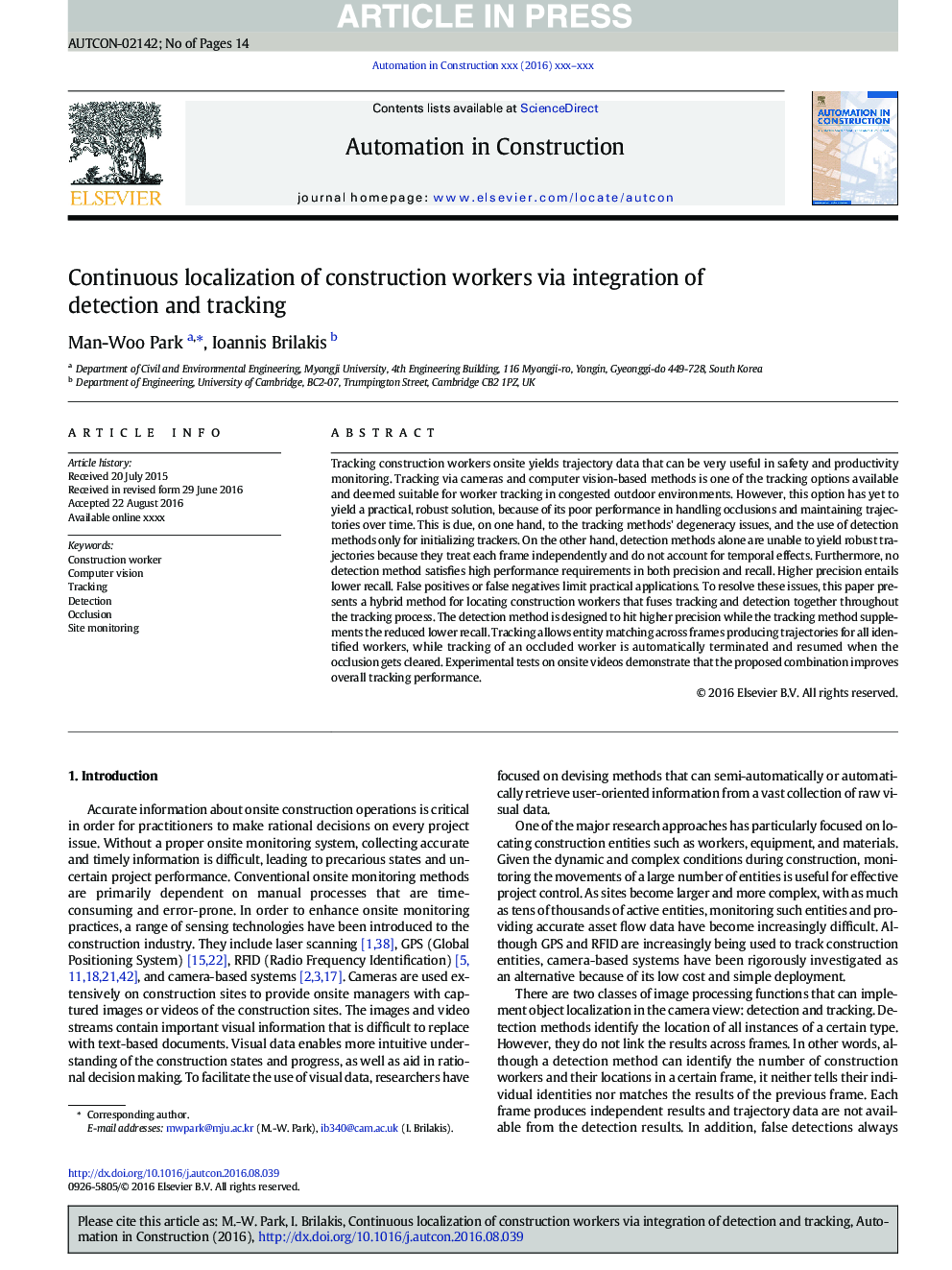| Article ID | Journal | Published Year | Pages | File Type |
|---|---|---|---|---|
| 4911262 | Automation in Construction | 2016 | 14 Pages |
Abstract
Tracking construction workers onsite yields trajectory data that can be very useful in safety and productivity monitoring. Tracking via cameras and computer vision-based methods is one of the tracking options available and deemed suitable for worker tracking in congested outdoor environments. However, this option has yet to yield a practical, robust solution, because of its poor performance in handling occlusions and maintaining trajectories over time. This is due, on one hand, to the tracking methods' degeneracy issues, and the use of detection methods only for initializing trackers. On the other hand, detection methods alone are unable to yield robust trajectories because they treat each frame independently and do not account for temporal effects. Furthermore, no detection method satisfies high performance requirements in both precision and recall. Higher precision entails lower recall. False positives or false negatives limit practical applications. To resolve these issues, this paper presents a hybrid method for locating construction workers that fuses tracking and detection together throughout the tracking process. The detection method is designed to hit higher precision while the tracking method supplements the reduced lower recall. Tracking allows entity matching across frames producing trajectories for all identified workers, while tracking of an occluded worker is automatically terminated and resumed when the occlusion gets cleared. Experimental tests on onsite videos demonstrate that the proposed combination improves overall tracking performance.
Related Topics
Physical Sciences and Engineering
Engineering
Civil and Structural Engineering
Authors
Man-Woo Park, Ioannis Brilakis,
